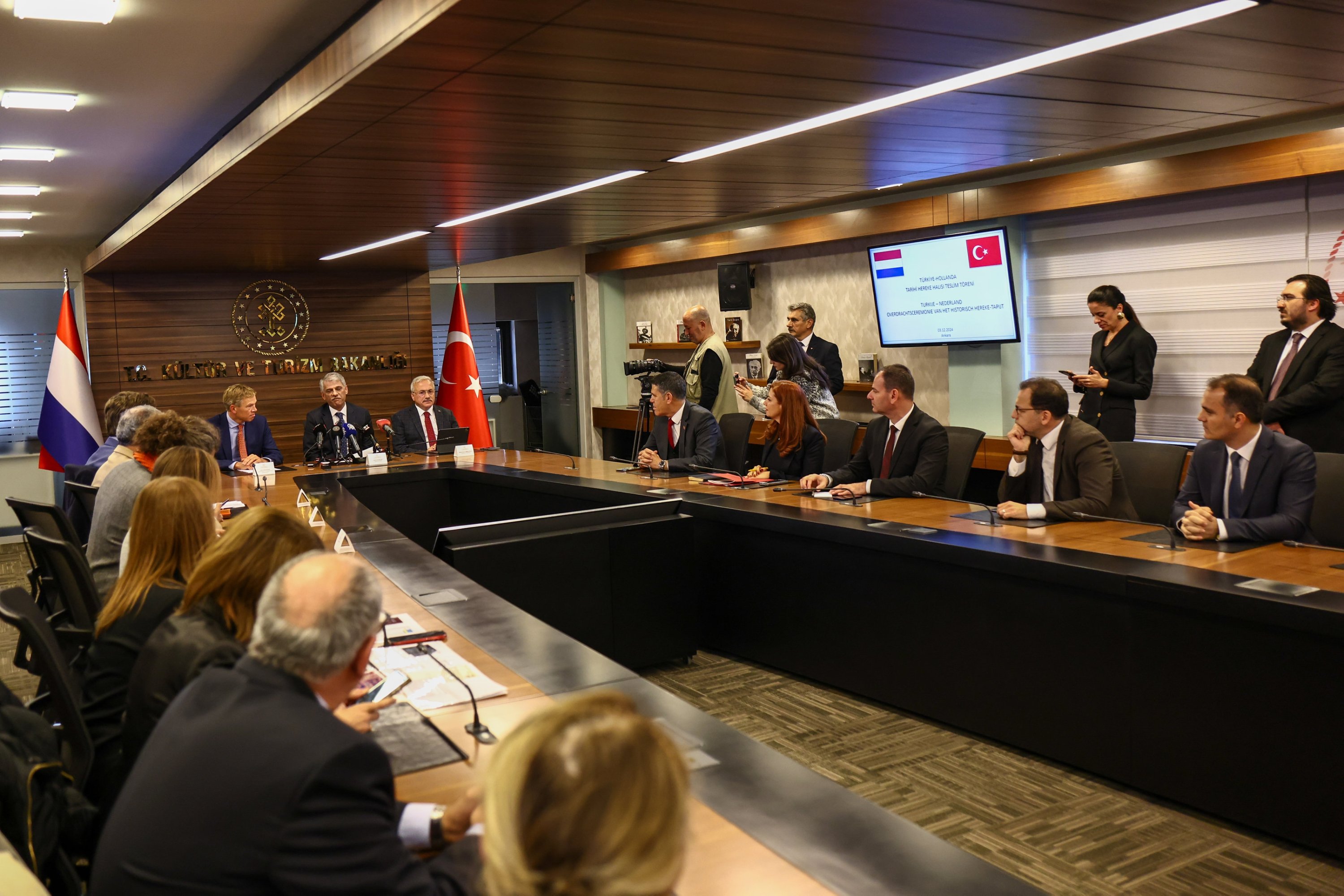A Hereke carpet, originally gifted during the Ottoman era and recently restored in Aksaray, will be sent to the Peace Palace in The Hague, Netherlands, which houses the International Court of Justice (ICJ).
As part of a protocol signed between the Carnegie Foundation, which manages the Peace Palace, and Türkiye’s Ministry of Culture and Tourism, the 161.5-square-meter (1,740-square-foot), 700-kilogram (1,545-pound) carpet was brought to the Aksaray Museum in May of last year. Following an inspection and assessment, the carpet was sent to Sultanhanı district for restoration.
Once the restoration was completed, the carpet underwent customs procedures before being shipped to the Netherlands.
The Hereke carpet is a renowned Turkish handwoven textile known for its exceptional craftsmanship and historical significance. Originating from the town of Hereke, located on Kocaeli on the northwestern coast of Türkiye near Istanbul, these carpets date back to the Ottoman Empire. Hereke carpets are highly valued for their fine quality, intricate designs and the skill required to create them.
A ceremony to mark the completion of the restoration was held at the Ministry of Culture and Tourism. Deputy Minister of Culture and Tourism Nadir Alpaslan, Ambassador of the Netherlands to Türkiye Joep Wijnands, Aksaray Governor Mehmet Ali Kumbuzoğlu and relevant officials attended the event.

Alpaslan remarked that the carpet, which has symbolized peace for over a century, has been revived through careful restoration work. He noted that it would be the largest handwoven carpet outside Türkiye located in the Peace Palace, describing the restoration process as a meticulous effort combining science and traditional craftsmanship.
Providing more details about the restoration, Alpaslan said: “In this process, where history, chemical analysis and weaving expertise converged, the original threads and colors of the carpet were carefully analyzed and revived using natural methods. During this work, the carpet was digitally divided into 280 equal parts to carry out detailed damage assessments.”
He added: “Fifteen different types of damage were identified. It was determined that the most significant damage came from foot traffic and furniture use. The restoration was carried out using natural dyes and Turkish knot techniques. Today, our Hereke carpet, consisting of 13,704,480 Turkish knots, is a globally recognized work of art, known for its elegance and durability.”
Alpaslan also mentioned that a documentary telling the story of the carpet’s journey from The Hague, through its restoration and back to the Peace Palace will be shared with the public soon.
Wijnands referred to the carpet as proof of the “shared history” between the Netherlands and Türkiye. He described it as a beautiful symbol of the relationship between the two countries, stating, “With the completion of the restoration process this special friendship year, the Hereke carpet will return to its home in the Netherlands, where it will continue to serve those working for global peace and justice in the years to come.”
Kumbuzoğlu pointed out that Sultanhanı has become an important carpet restoration center. He shared that historical carpets from institutions such as Dolmabahçe Palace, the Turkish Parliament, the White House and the U.K. Royal Palace have been restored in Sultanhanı to their original specifications.
Kumbuzoğlu expressed pride in the restoration of the carpet for the Peace Palace and thanked everyone involved in the project.


